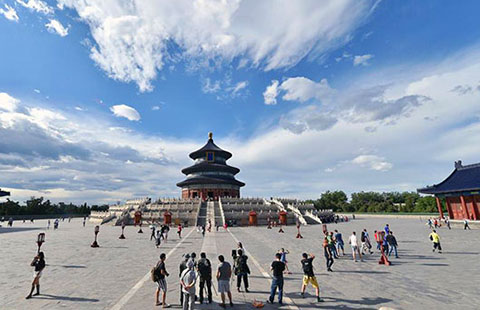China issues white paper on Tibet
(Xinhua) Updated: 2015-09-06 10:25
 |
|
Young people in traditional khampas during Damar Festival, Gyangze county, Tibet, 2013. [Photo by Wang Xuepeng/All rights reserved by chinadaily.com.cn] |
People in Tibet 'masters of the country'
The implementation of regional ethnic autonomy provides an institutional guarantee for the people of all ethnic groups in Tibet to be masters of the country and of society in the real sense, according to a white paper published Sunday.
In Tibet, the people of all ethnic groups directly elect deputies to the people's congresses at the county (district), township and town levels in accordance with the law; these deputies elect the deputies to the National People's Congress (NPC) and the people's congress of the autonomous region, the white paper titled "Successful Practice of Regional Ethnic Autonomy in Tibet" said.
From 2012 to January 2013, 94 percent of the constituency of Tibet autonomous region participated in direct elections at the county and township levels, among the four levels of the people's congresses, it said.
Currently, Tibet has 34,264 deputies to the people's congresses at all levels. Among them, deputies from the Tibetan and other minority ethnic groups account for 66.7 percent and 70.2 percent respectively of all deputies from Tibet to the NPC and to the People's Congress of Tibet Autonomous Region, the white paper added.
In addition, in the 10th Standing Committee of the People's Congress of Tibet autonomous region, 24 of the 45 members and eight of the 14 chairperson/vice-chairpersons are from the Tibetan and other minority ethnic groups.
By July 2015, the People's Congress of Tibet autonomous region and its Standing Committee had enacted and ratified 123 local regulations that are currently effective, made 148 resolutions and decisions that have the same legal standing as regulations, and 29 regulations, resolutions and decisions it ratified have been repealed.
They total 300 in all, covering the building of political power, economic development, social stability, culture, education, language, protection of cultural relics, and environmental protection, according to the paper.
Regional ethnic autonomy suits Tibet, China
Implementing the system of regional ethnic autonomy in Tibet conforms to China's reality as a unified multi-ethnic country, according to a white paper about Tibet published on Sunday.
Ever since ancient times, Tibet has been an integral part of China, and the Tibetan ethnic group has been a communal member of the Chinese nation sharing a common destiny, the white paper titled "Successful Practice of Regional Ethnic Autonomy in Tibet" said.
From the 13th century, when the Yuan Dynasty (1271-1368) included Tibet under its central administrative jurisdiction, to the time before 1949 when the People's Republic of China was founded, the central governments of all dynasties in China ruled Tibet as part of the country, it added.
Regional ethnic autonomy is the correct choice for China, a unified multiethnic country, to address ethnic issues and relations. It is also a significant component of China's socialist system. Under the socialist system, all power belongs to the people, and the state safeguards the democratic rights of the people. The exercise of this system in Tibet has combined unification and autonomy, taking into account both ethnic and regional factors, according to the white paper.
Through several decades of exploring the path of regional ethnic autonomy, the people of all ethnic groups in Tibet Autonomous Region have achieved equality, unity, mutual support and harmony, and the system of regional ethnic autonomy has won the wholehearted support of all ethnic groups in China, it added.
- Delegation salutes Tibet anniversary
- Officials are told to act as anti-graft watchdogs
- Great Wall safeguarded in united action
- Vice minister pledges more efforts to improve air quality
- Beijing’s efforts to control air pollution start to pay off
- China's military committed to reform
- Netizens rip singer over baby photos
- Central govt's growing support for Tibet
- Monument to be built on Tianjin blast site
- China and Russia seal raft of energy deals







